Hip Dysplasia In Dogs: What Is It & How Do We Treat It?
Hip dysplasia in dogs is one of the most common arthritic conditions that dogs suffer from.
Many owners express worry about their dog’s sore hips, especially when they may struggle to exercise and get up from a sitting or lying down position.
In this article, we explain what hip dysplasia in dogs is, how it occurs and how we can minimise this common skeletal abnormality from developing.
We will discuss treatments including surgical intervention as well as medications and nutriceutical options for pain prevention and mobility enhancement.
Learn about hip dysplasia in dogs including how you can help prevent this common skeletal abnormality from developing as well as treatments.
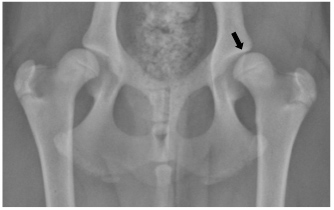
Radiograph of hip dysplasia in a dog. The hip is a ball and socket joint. You can see that the ball is not sitting deeply in the socket.
What Is Canine Hip Dysplasia?
We know that the majority of dogs are born with normal hips.
It is very rare to find congenital abnormalities.
However, once dogs start growing and exercising we then begin to see problems.
Canine Hip Dysplasia (CHD) is a condition that develops as dogs grow and exercise more.
Rapid growth and inappropriate exercise can result in instability or laxity of the hip joint.
The instability of the femoral head (ball) in the socket (acetabulum) results in a joint that rubs and grinds instead of sliding smoothly.
Over time degenerative joint changes occur due to wear and tear:
- acetabular bone sclerosis (hardening of the bone),
- osteophytosis (outgrowths of bone around the joint),
- thickened femoral neck,
- joint capsule fibrosis,
- subluxation or luxation of the femoral head.
This ultimately leads to cartilage loss and the formation of boney osteophytes, in other words, arthritis.
What Does A Normal Hip Joint Look Like?

The ball and socket hip joint. Black is the socket (acetabulum of the hip), red is the ball (femoral head of the femur).
To be able to understand hip dysplasia we need to have a basic understanding of the hip joint.
The hip joint forms the attachment of the hind leg to the body and is called a ball and socket joint (coxofemoral joint).
The ball portion is the head of the femur (red) while the socket (acetabulum) (black) is located on the pelvis.
In a normal joint, the ball rotates freely within the socket due to the bones being perfectly shaped to match each other.
The area where the bones actually touch each other is called the articular surface. In a normal, healthy joint the articular surface is perfectly smooth and cushioned with a layer of spongy cartilage.
The joint also contains a highly viscous fluid called synovial fluid that lubricates the articular surfaces. Synovial fluid contains a high amount of hyaluronic acid, giving it its viscous properties, that helps the joint to glide.
In a dog with normal hips, all of these factors i.e. the articular surface, the conformation of the whole pelvis and legs, and the joint fluid work together to ensure the joint functions smoothly.
What Causes Hip Dysplasia In Dogs? Three Main Risk Factors
There are many reasons why this disease syndrome occurs, some that we know about, and some that we have yet to identify.
Hip dysplasia, therefore, is not one disease but many diseases that result in common arthritic (degenerative) lesions of the hip joint.
Although biomechanical and environmental factors associated with certain body conformation and size are considered the main cause of canine hip dysplasia, genetics also play a role.
Breed Influences – Genetics
Heritability of CHD is around 25% (although for some breeds the range is 25-80%), meaning that the presence of CHD is only moderately caused by genetics and a lot more related to the environment.
In saying that, studies in closed populations of German Shepherd dogs did show that breeding dogs that showed no radiographic signs of hip dysplasia at 1 year of age, resulted in a decrease in the incidence of hip dysplasia from 37.9% to less than 17% after 3.5 years of breeding.(1)
If a parent dog has hip dysplasia, then that animal’s offspring are at greater risk for developing hip dysplasia.
To minimise the risk of a dog being prone to hip dysplasia, it is recommended to only select pups from breed lines where PennHIP scores are performed but the distraction factor is less than or very close to the average for that breed.
Hip dysplasia is the most common inherited orthopaedic disease in dogs, most often seen in large or giant breed dogs, although it can and does occur in smaller breeds.
Most Common Breeds That Suffer From Hip Dysplasia
- German Shepherd
- Bulldogs,
- Mastiffs,
- American Staffordshire terriers,
- St. Bernards,
- Golden retrievers,
- Rottweilers
- Labrador retrievers
- Bernards labrador
- Alaskan Malamute
- Samoyed
- Bernards Labrador
Nutrition Influences
Research has shown that feeding high-calorie and high calcium diets predispose young pups to hip dysplasia.
Rapid weight gain and ad-lib feeding have been shown to result in abnormal development of the hip joint.
Feeding a diet that has too much or too little calcium or other minerals can also have a detrimental effect on the development of bones and cartilage.
Fat, cuddly pups may look cute, but this predisposes them to developmental problems and you are doing them a long-term disservice, resulting in a life of pain and discomfort.
Recommendation: Feed a breed or size-specific commercial balanced kibble that is formulated for puppies.
Exercise Influences
Too much exercise at a young age, when bones are still developing can increase the risk of wear and tear to the hip joint.
The most crucial time to restrict and be sensible with the type of exercise you give your dog is very early on i.e. one month to six months of age.
During this age period, incorrect exercise can result in long-term damage to your pup’s hips.
When puppies exercise heavily, laxity between the femoral head and acetabulum is exacerbated and the joint is traumatized by the abnormal motion and impact of repeated subluxations and reductions.
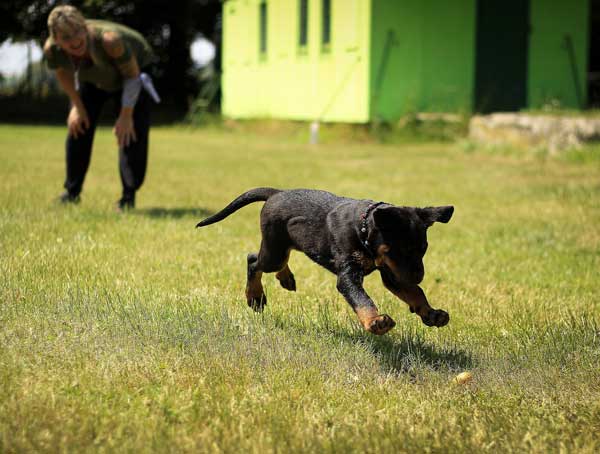
Too much exercise can harm the development of your pup’s hip joint.
If the puppy is overweight then this trauma is further increased resulting in the joint having to cope with even more force.
It has been shown that keeping pups confined and cage rested until 9mths old decreases the risk of hip dysplasia.
But like anything, it is ridiculous to think we will lock up our dogs and treat them with cotton wool.
Instead, it is a balancing act between giving a pup adequate exercise and socialisation and trying to prevent trauma to their musculoskeletal system.
Sensible restrictions are required.
Tests For Canine Hip Dysplasia
The PennHIP method of assessment for risk of hip dysplasia is the current gold standard. This method measures hip laxity using the distraction index DI.
The closer the DI number is to 0 the tighter the hips (less laxity and less chance of hip dysplasia).
DI numbers close to 1 mean the hips have high laxity and it is highly likely the dog will succumb to hip dysplasia.
Studies have shown that dogs with a DI score of less than 0.3 do not get hip dysplasia.
Puppies can have their hips assessed from as early as 16 weeks old, with no risk to them. This is a good idea if your pup is one of the “at-risk” breeds as it allows you to plan appropriate exercise and feeding levels.
When choosing a dog it is always best to check the breed standard and choose from parents that have lower than breed average PennHip scores.
The breed standard values can be found here: PennHip Breed Scores
You can learn more about the PennHIP method here.
Signs Of Hip Dysplasia
In some young dogs, there may be no obvious lameness or muscle atrophy, while in others, lameness and muscle atrophy can be very noticeable.
Those dogs with subtle signs will often become lame with exercise.
Signs that a dog may have hip pain include:
- Walking with hind legs close together (base narrow),
- Swaying gait (rear end moves back and forth in a pronounced fashion)
- Decreased flexion through the stifle and hock so that weight shifts forward onto forelimbs
- Bunny hopping (especially when going up and down stairs)
- Trouble rising or lying down, especially on smooth surfaces
- Sitting in the “frog” position (one hip splays out)
- Reluctance to run, jump, climb stairs
- Hind-limb lameness and pain, often worse after exercise
- Early exhaustion
As the condition gets worse then the following signs also may occur:
- Muscle wastage in the hindquarters
- Reluctance to be touched especially around the hindquarters
- Unexplained aggressive behaviour

Frog sitting can be due to painful hips.
Veterinary Examination To Diagnose Hip Dysplasia
A vet will often examine your dog after giving sedation.
This allows the dog to be more relaxed and not bracing against any pain they are feeling.
When a veterinarian checks the movement of the hips, they will often appreciate a decrease in the ability to extend the hip.
They will check for increased laxity of the joint using the ‘Ortolani Test’.
In this test, the vet manipulates the hip to see if the femoral head can be displaced in and out of the acetabulum. If this occurs, the dog has hip dysplasia.
Flexion is usually normal, except in very severe cases with capsule fibrosis.
Radiographs are used to determine the degree of arthritis and for planning treatments.
How To Prevent Hip Dysplasia
1. Choose your pup wisely.
- If you are a breeder, breed wisely from stock with low distraction scores.
- Choose a pup whose parents have had PennHIP scores performed and the distraction score is ideally lower than or close to the breed standard.
2. Avoid running, jumping, and slippery smooth surfaces, especially for young dogs.
- For young pups, try to balance rest with exercise and avoid climbing stairs.
3. Feed a complete and balanced diet.
- Avoid homemade diets for pups
- Don’t feed adlib.
- Don’t add extra supplements without consulting a veterinarian or veterinary nutritionist.
- Be wary of feeding unbalanced raw diets especially to pups or growing dogs.
How To Treat Hip Dysplasia
As they say, prevention is better than cure, however, if your dog does succumb to the wear and tear of arthritis in the hip joints there are some options for you to consider.
Treatment of hip dysplasia can be conservative, medical, and/or surgical.
Conservative Treatments
These involve weight management, restriction of exercise, especially on hard and slick surfaces, physical therapy, and swimming.
Keeping the dog warm also provides great relief from pain caused by muscle spasms.
Medications
These can either be prescribed medications from your vet such as anti-inflammatories and injectable nutraceuticals or over-the-counter oral nutraceuticals.
There are many joint supplements on the market and making a detailed list of these involving pros and cons is a topic for another day.
Some treatments we recommend:
Surgical Treatments
For some animals, surgery can be an option with better results for minimising pain and discomfort.
Juvenile Pubic Symphysiodesis Surgery
In pups that have been diagnosed very young (3-4 months old) juvenile pubic symphysiodesis surgery is an option.
This procedure uses electrocautery to kill the growth physis at the ventral midline, or pelvic symphysis. This stops growth in this area while other parts of the pelvis continue to grow resulting in a better alignment of the ball and socket hip joint.
Femoral Head And Neck Excision
In older animals, the most common surgery is the femoral head and neck excision (FHNE).
Basically, this removes the whole ball part of the hip joint so that no rubbing occurs.
Dogs are encouraged to exercise soon after surgery, with results generally being very good.
Result success decreases as weight increases and if muscle wastage is already prominent.
Triple Pelvic Osteotomy (T.P.O.)
For those dogs that are up to one year old with very minimal radiographic signs of degeneration and nice deep joint sockets (acetabulum), triple pelvic osteotomy (T.P.O.) may be an option.
This surgery prevents hip subluxation by rotating the dorsal rim of the acetabulum laterally to provide more coverage of the femoral head.
This surgery has excellent results if performed before any sign of arthritis are seen on radiographs.
Total Hip Replacement
Big dogs who are in a lot of pain and have irreparable joint disease may be a candidate for total hip arthroplasty (THA).
This is just like a hip replacement in humans.
Careful case selection is required.
Summary Of Hip Dysplasia In Dogs
It is the most commonly inherited orthopaedic disease in dogs.
It is a degenerative, developmental condition, leading to painful hip osteoarthritis, stiffness, and diminished quality of life.
All dog breeds are affected by the disease, in some breeds more than 50% of dogs are afflicted.
The disease is polygenic and multifactorial.
The development of CHD is affected by environmental factors such as weight and age and nutrition.
There is no medical or surgical cure for CHD.
CHD is a major concern for working dogs, pet owners, breeders and veterinarians.
1. Riser WH, Shirer JF: Correlation between canine hip dysplasia and pelvic muscle mass: A study of 95 dogs. Am J Vet Res 124:769, 1967
If you have questions about the pain your dog is in, our vets are available 24/7 to answer your question and assist with treatments in a one-on-one consult.

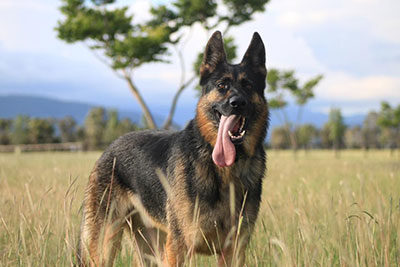
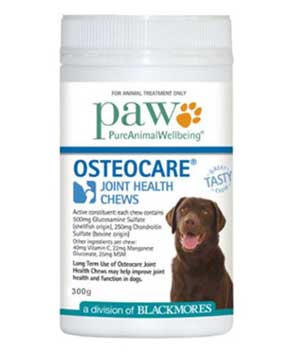

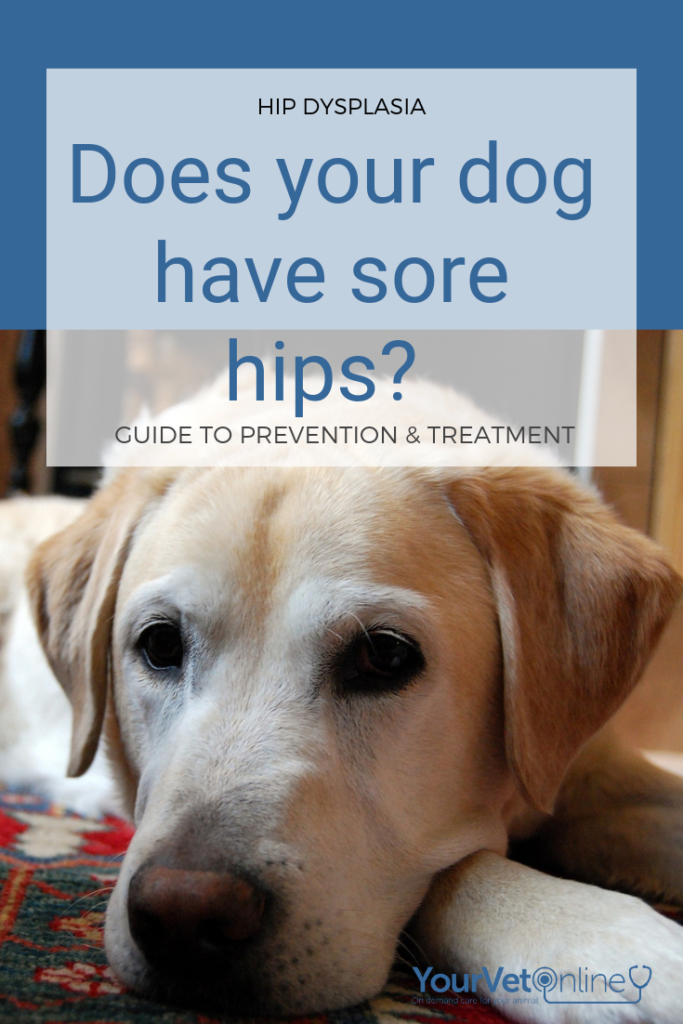
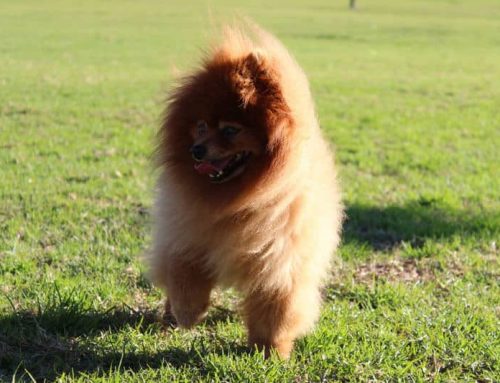

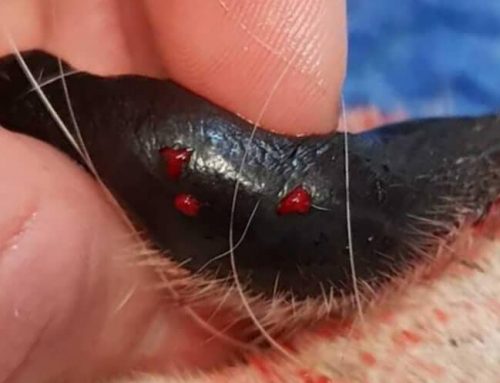
Leave A Comment